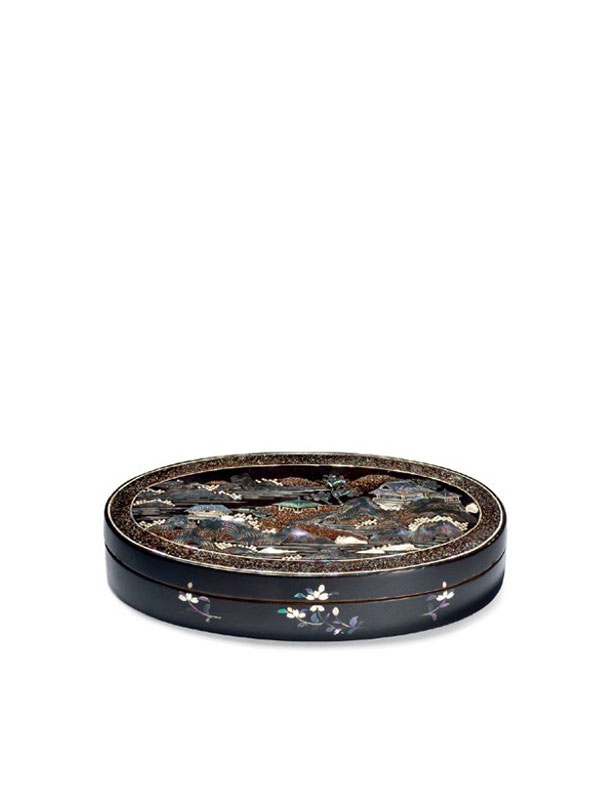Kyoto-Nagasaki Style Lacquered Tobacco Box on Copper
At the end of the 18th century in the Nagasaki area the production of lacquer panels with a design based on European engravings started, ordered by employees of the Dutch VOC (East India Company) who were at that time living in Deshima, the artificial fan-shaped island off the coast of Nagasaki that first the Portuguese and subsequently the Dutch had been granted by the Japanese for trading purposes. This well-preserved oval lacquer tobacco box was unusually made with a copper base, perhaps because metal was more durable than the traditional wood base for lacquer objects. Two larger, rectangular copper tobacco boxes, similarly decorated, are in the Groninger Museum.[1] Oliver Impey and Christiaan Jörg remark that: ”Oval or round tobacco boxes are more rare.”[2]
- Impey O. and Jorg, C. Japanese Export Lacquer 1580 – 1850, Hotei Publishing Amsterdam, 2005. Pl. 512 a + b, p 212
- Impey O. and Jorg, C op. cit. p. 213

